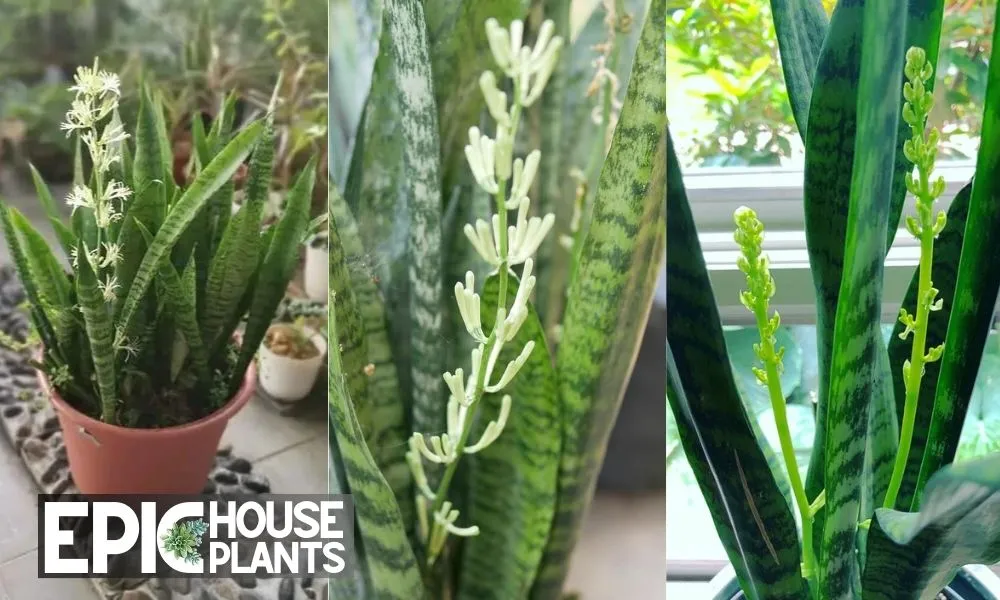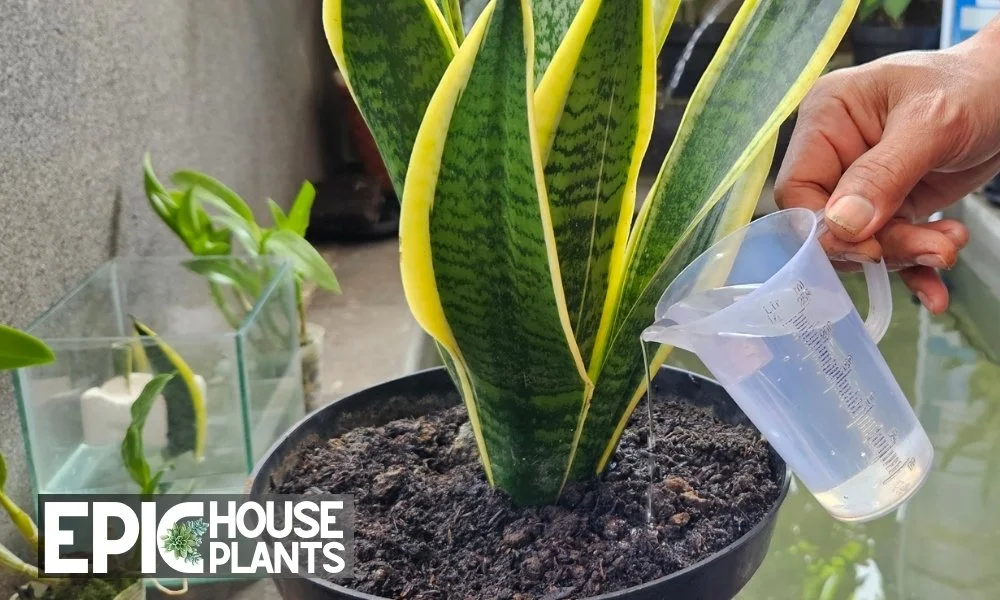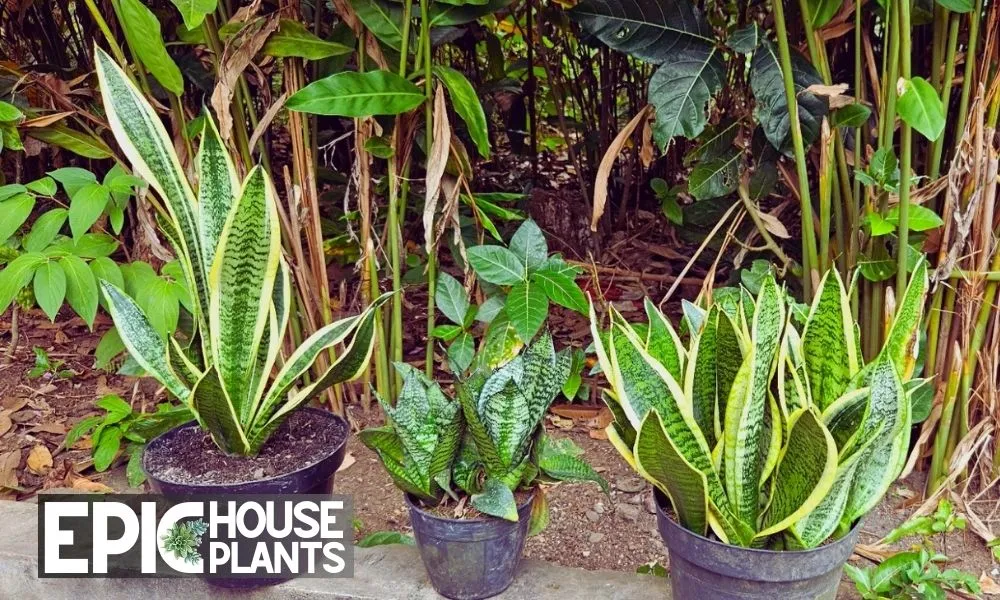Snake plants, or Sansevieria, are known for their hardiness, architectural appeal, and air-purifying abilities. They are easy to care for and adapt well to a variety of conditions, making them a popular choice for many indoor gardeners.
However, as with all things, they are not without their disadvantages. This article aims to provide you with a thorough understanding of the lesser-known cons of owning a snake plant.

Toxicity: The Hidden Dangers of Snake Plants
Snake plants are visually appealing, but beneath that charm lies a hidden danger – their toxicity.
What Makes Snake Plants Toxic?
Every part of the snake plant is toxic, including its leaves, rhizomes, roots, flowers, and fruits. This is due to the presence of a class of chemicals known as saponins.
Saponins serve as a defensive mechanism for the plant, protecting it from insect, fungal, and bacterial pathogens. Their role is essential for the plant’s survival, but it spells trouble for other organisms.
For a deeper understanding of saponins and their role in plants, consider reading this informative article: Plant Saponins: Their Importance and Role.
Are Snake Plants Toxic to Humans and Pets?

Indeed, snake plants can be harmful to humans and pets if ingested. Saponins can cause a variety of gastrointestinal side effects, including abdominal pain, diarrhea, nausea, and vomiting.
Hence, it’s essential to keep snake plants out of reach of children and pets. Additionally, you should always wash your hands after touching a snake plant, especially when propagating it.
💡Also Read: If you’re a dog owner as well, you might also be interested in reading our article on Are Snake Plants Toxic to Dogs?, as the toxicity of snake plants is not limited to cats.
The Controversial Feng Shui Beliefs About Snake Plants
Snake plants have an interesting place in Feng Shui, a traditional Chinese practice that aims to harmonize individuals with their surroundings.
Do Snake Plants Bring Bad Luck?
According to some Feng Shui beliefs, keeping snake plants indoors can attract negative energy or harm the household.
This is attributed to their pointed leaves, which resemble “poison arrows” and are believed to generate negative energy vibrations when directed at a person’s body.
However, it is important to note that there is no scientific evidence to support the claim that snake plants bring bad luck. Whether or not you subscribe to these beliefs depends on your personal perspectives and cultural understandings.
The Unpredictability of Snake Plant Flowering

Snake plants have an irregular blooming pattern that can confound many plant owners.
The Enigma of Snake Plant Flowering
Although snake plants can produce flowers, their blooms are quite unpredictable. Some varieties of snake plants may flower every year, while others might not bloom a single flower for several years. This unpredictability can be disappointing for those who eagerly anticipate their plant’s blossoms.
If you’re wondering “Do snake plants flower?“, you’re not alone. This is a common question among snake plant owners.
For more insights into the flowering habits of snake plants, you might find this article helpful: Do Snake Plants Flower? Unraveling the Mystery.
Is Flowering Essential for Snake Plants?
The lack of regular flowering doesn’t impact the health or growth of the snake plant. While the blooms are a pleasant surprise, they are not essential for the plant’s survival or growth.
Difficulty in Pruning

One challenge that snake plant owners often face is the difficulty in pruning these resilient plants.
Hardiness Translates to Tough Pruning
Snake plants are incredibly hardy. While this means they can withstand a wide variety of conditions, it also means that their leaves are quite tough. As a result, pruning snake plants can be a challenging task.
It requires a sharp tool and a bit of strength to cut through the thick, fibrous leaves. Improperly pruning a snake plant may lead to damage, inhibiting its growth or causing it to become more susceptible to disease.
Propagation Difficulty
Additionally, the propagation of snake plants might be a bit more challenging compared to other houseplants. Due to their dense leaf structure, getting the cuttings to root can take patience and time.
Furthermore, the risk of the cuttings rotting before they have a chance to root is relatively high if not done correctly. Hence, while snake plants are generally low-maintenance, their propagation can require a bit of a green thumb.
Susceptibility to Overwatering

While snake plants are resilient, they are not immune to all forms of plant distress. Overwatering is one such issue that often plagues snake plant owners.
How Overwatering Affects Snake Plants?
Overwatering is the fastest way to kill a snake plant. Because they are adapted to arid conditions, their roots can rot if they sit in water for too long. Signs of overwatering include yellowing leaves, a mushy base, and a general droopiness.
Preventing Overwatering
The best way to prevent overwatering is to water your snake plant sparingly and ensure it has adequate drainage.
Snake plants typically only need to be watered every two to six weeks, depending on the humidity and light levels in your home. During the winter months, you can often cut back even more on watering.
To conclude, while snake plants are known for their low-maintenance and resilient nature, they do come with certain disadvantages that plant owners should be aware of.
However, with the right watering routine and attention, these potential issues can be easily managed, allowing your snake plant to thrive.
💡Also Read: In this article, we will dive into several snake plant benefits, ranging from its ability to purify air, to its capacity to absorb CO2 at night.
The Cold Weather Woes
Among the many factors that affect plant growth, temperature plays a pivotal role, particularly for the snake plant.
Snake Plants and Cold Weather: A Troublesome Duo
Snake plants are native to warm climates, specifically regions classified as USDA Hardiness Zones 9-11. They thrive in temperatures above 45 degrees Fahrenheit. Anything below this threshold can cause the plant to suffer, and prolonged exposure to cold can even result in the death of the plant.
If you live in a region that experiences colder temperatures, it’s important to give your snake plants additional care, especially during the winter months.
Snake plants are not frost-hardy, and they shouldn’t be kept outside when temperatures start to plummet.
Fungal Infections: An Underlying Threat to Snake Plants
The resilience of snake plants does not extend to every aspect of their care. High humidity and overwatering can make them prone to fungal attacks.
Conditions Favoring Fungal Attacks
Fungi often attack snake plants when the humidity is too high, targeting their leaves and roots.
Overwatering and a lack of sunlight can lead to a fungal infection in the roots, which can, in severe cases, lead to the demise of the plant. Overwatering is, in fact, one of the primary reasons behind snake plant fatalities.
Propagation Problems: When Multiplying Snake Plants Isn’t Easy

Propagation is a common method to multiply plants. However, when it comes to snake plants, the process can be quite challenging.
Why Propagating Snake Plants is a Challenge?
Snake plants are known for their slow growth. This characteristic can make propagation, particularly through leaf cuttings, challenging for gardeners, especially beginners.
The cuttings are prone to rot, and the success rate is lower compared to other plants. Even when successful, it can take a long time for new plants to grow from cuttings.
Difficulties with Rhizome Division
Rhizome division, another common method of propagation, is also challenging with snake plants. They grow slowly and may not produce enough pups to divide, making this method less viable for those who wish to multiply their plants quickly.
Final Words
In conclusion, the snake plant, despite its reputation for hardiness and ease of care, isn’t without its disadvantages.
From sensitivity to cold temperatures, susceptibility to fungal infections, to challenges in propagation, caring for a snake plant requires understanding these potential pitfalls.
Nevertheless, the beauty and benefits of the snake plant make the efforts worth it. After all, no plant is entirely problem-free, and each comes with its unique set of challenges.
Being aware of these snake plant disadvantage equips you to handle them effectively and maximize your plant’s health and longevity.
Author

Pudji Haryanto
Pudji Haryanto is a writer and urban farmer with a passion for cultivating plants. He has over 15 years of experience in agriculture and currently manages a 65,000 square foot rice-field and yard filled with various plants, including vegetables, spices, flowers, and garden plants.



